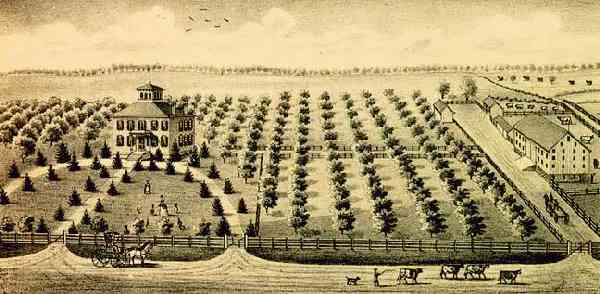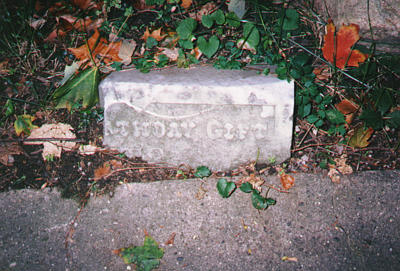
Notre Dame's Grotto / by Dorothy V. Corson


People and Events Associated with the Grotto
One item of particular interest on file at the Indiana Province Archives Center was a December, 1953 letter of correction,(129) written by Father Joseph Maguire to Father Thomas T. McAvoy, the University Archivist at the time. It disputed a number of commonly held beliefs about the Grotto's history and became a benchmark for all the research that followed.
Father Maguire was ordained in Sacred Heart Church in December of 1896, the year the Grotto was built. He was one of the few people alive in 1953 who had known Father Sorin. In the first part of his letter to Father McAvoy he states :
My dear Father McAvoy:
After reading the account of the Grotto as printed in the recent publicity sheet, I felt I should write a word or two for your files correcting the mistakes and that you could have the correction for future use. I did send, some time ago, an account to the Provincial who said he would add it to the files but perhaps no one thought of looking there for the information. So here is the story: Father Sorin may have expressed a wish for a grotto and he may have made one somewhere on the grounds but I never saw it or heard of it. If he did construct one, he probably built it on the grounds of the Sisters.
The first effort to build a grotto was made by Father William Corby in 1896 when he was Provincial. Father Sorin died in 1893. Father Carroll of Oil City, Penn. supplied not only part of the money but all of it -- so I was told -- as an expression of his devotion to Our Blessed Mother. . . .
It soon became evident that very little was known about the Grotto as it approached its one hundred anniversary. Father Maguire had written his letter to correct these false impressions, but it must not have gotten beyond the archives to correct future interpretations of people who weren't around at the time. Most people still believe the present Grotto was built by Sorin.
Father Maguire's letter, although it was not completely accurate, touched on previous unknown aspects of the building of the Grotto which assisted in the research of its actual construction.
Father Maguire's letter goes on to say this about the site of the present Grotto:
The spot chosen was not a "beautiful dell" but an old midden where everything from old shoes and tin cans or what have you were thrown -- just a dump heap. When it was decided to build the grotto there old Brother Phillip had his crew clean up the rubbish before the work was begun. The boulders were gathered from our farm and the others surrounding it.
The "little wooded dell" reference appeared to be a common description of the area behind the church from the early 1870s until 1896. This would have been eight years before Sorin built his 1878 shrine-like Grotto directly behind the church. During those times pilgrimages involving as many as 1200 people were made to the numerous shrines in the area of the Portiuncula Chapel, the last stop being the Sacred Heart Church.
Seventeen years before the present Grotto was built, this item appeared in the June, 1879 issue of the Scholastic . It was two months after the disastrous fire that destroyed the Main Building. It explains the paradox:
The rubbish of the burned buildings after the fire was taken to fill the low ground west of the church and presbytery and the charcoal was put in barrels while the loose mortar was gathered and spread on the roads.(130)
The Scholastic also speaks of the "much admired artificially trimmed cedar trees which were scorched on one side that were bound to go" and how "the familiar cut forms look lonely enough turned upside down with other rubbish near the lake . "
Father Maguire had been right about the rubbish though he did not know its origin or that it had been buried under the construction site of the new Grotto.
With this key information, it was evident where all the curious items Father Maguire mentioned in his letter had come from, the rubbish from the 1879 fire in the Main Building. Probably everything imaginable was dumped behind the presbytery, then dirt fill was piled on top of that before the wooded area was re-landcaped. When the cave was carved out of the slope of this refurbished area seventeen years later, to build the second Grotto, the rubbish was unearthed. The spot chosen by Corby to erect the new Grotto was described as a "beautiful wooded dell." Conversely, it also turned out to be "just a dump heap" like the site of the Lourdes Grotto itself, that was said to be a dumping place and repository for all manner of refuse.
On the left side of the path north of the Grotto, along the road from the Main Building, is what appears to be a rock outcropping from the earth. The partial words, "thday Gift," are carved on the portion visible above the ground. Could it have been part of some kind of statuary, possibly a birthday gift to Father Sorin, that was thrown out a window during the fire and broken? Since it is apart from the main cavern of the Grotto, it may have been in a dumping area left undisturbed by the building of the new Grotto.

At the top of the steps, along the left side of the path from the Grotto leading to the Church, is another rough hunk of what appears to be white marble. It has a curious symbol carved on it . It could also have been part of something else, or was put to use for practice carving.
An excerpt from another 1896 Scholastic article entitled, "Where Peace Is," describes the area designated for the new Grotto:
This was Father Sorin's garden, created for him by the hands of his children in Christ. Once upon a time, . . . the ground sloped down from the west wall of the church to the water's edge, thirty yards distant; and after the garden was planned, it took many tons of earth to build the broad terrace. But it was all "for Father General," and the work grew apace. Rose bushes sprang up, and flowers of all sorts. Then came the great fire and the plot was suddenly widened. The lake was driven backward .
Much fill must have gone on top of the rubbish from the fire as the grounds around Father Sorin's garden were landscaped and improved. Seventeen years went by, then in the spring of 1896:
The workmen came with picks and shovels, a month or two ago, to chop in the garden's lower edge a niche for the new grotto of Lourdes . . .(131)